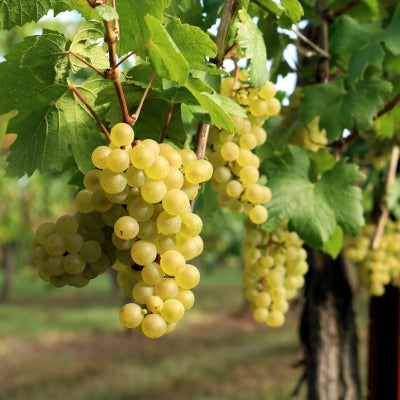
What does Chardonnay Taste like from the Old World?
What does Chardonnay taste like? Its reputation for being overly buttery and oaky may have led to the ABC (anything but Chardonnay) trend, but that bias has waned. And with good reason. The fine wine drinker is increasingly savvy and with knowledge comes power. That is, if knowing that white wine from Burgundy is made from Chardonnay is a power. We’d like to think it is.
Chardonnay is somewhat of a workhorse of a grape; it can be found growing in a variety of climates and terroir. It really is putty in the vintner’s hands. Perhaps more than any other grape, Chardonnay can bend to the winemaker’s desire. It also expresses terroir, certainly, but the range of ways to tinker with it in the winery are many.
Options such as whether or not to undergo malolactic fermentation will affect if it is buttery or not. Oak aging is another option. As is lees stirring, which adds yet more richness and weight. However, if a winemaker’s goal is to create a lean and steely Chablis-style wine, this too is an option and Chardonnay can perform well in all these styles in the right hands. There's also the crucial role Chardonnay plays in sparkling wine. Ultimately, what Chardonnay tastes like is the winemaker’s decision.
Why does it do so well, worldwide? It is able to produce relatively high yields without many negative effects on quality. While its early-budding nature can put it at risk for springtime frost, it also ripens fairly early making it suitable for climates considered marginal, such as Champagne. And, seeing as it is malleable, it can create a wide variety of wine experiences for a variety of palates.
So, what does Chardonnay taste like in the Old World?
In France, we look at Burgundy first when considering high-quality Chardonnay. Although what Chardonnay tastes like in Chablis is quite different from how it tastes in the Côtes d’Or, the Chalonnaise, and the Mâconnais. Chablis is known for the lean and mineral-driven Chardonnays, with staunch acidity that lends them well to aging. Oak tends to be avoided. Veering south into the Côte d’Or, in particular the Côte de Beaune, we find the superstars of the region: Meursault, Chassagne-Montrachet and Puligny-Montrachet. The nature of the fruit is riper and new oak is par for the course. While the Mâconnais is not as well-known, some subregions such as Pouilly-Fuissé yields high-quality Chardonnays, with ripe fruit flavor delving into the tropical spectrum.
Of course, one can’t neglect Chardonnay’s role in Champagne. Whether part of a blend, or allowed to shine all on its own in a Blanc de Blancs. Once again, it is Chardonnay’s malleability that makes it a choice grape to use in sparkling wine. The toast, brioche and creamy notes that develop while the wine rests on the lees of its secondary fermentation are what’s desired. A fruit with a more aromatic profile would drown out those flavors.
Italy isn't first to come to mind when one considers Chardonnay, but is well worth exploring. The variety has even been given its own appellation: Alto Adige Chardonnay DOC. Fine examples can also be found in Fruili Venezia Giulia by producers such as Jermann and Miani.
While the Old World boasts some of the best-known Chardonnays, next we’ll look at the examples from the New World examples—many of which are now far from the “ABC” wines of yore.



